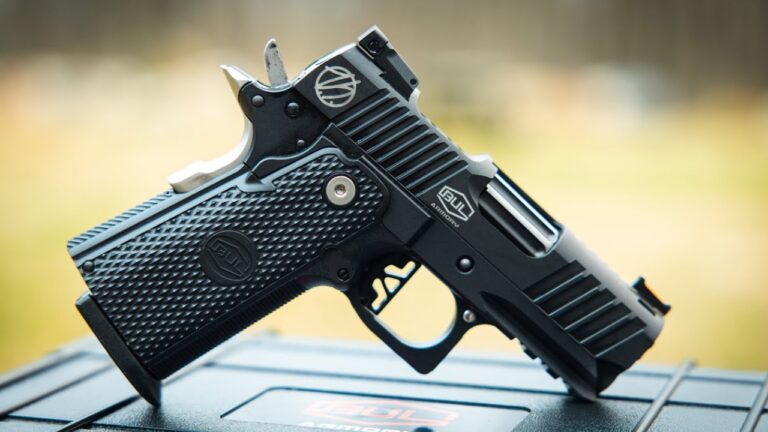Some calibers get used out of habit more than anything else. Maybe they were solid in their time, maybe they still work okay for a few things—but people treat them like they’re untouchable. Truth is, a lot of these rounds are overrated for modern needs. Whether it’s cost, performance, or practicality, some of these calibers get way more attention than they deserve. If you’re loyal to one of these, it’s worth asking whether that loyalty is really earned—or just old habit.
.30-30 Winchester

The .30-30 has been around forever, and that’s part of the problem. Folks swear by it because their granddad used it, but it’s been outclassed for years. You’re limited on range, energy, and accuracy compared to modern loads. It’s fine for brush hunting, but outside of 150 yards, it starts to fall apart fast. With better ballistic options available now, you don’t need to keep reaching for a cartridge that’s basically riding on nostalgia.
.40 S&W

The .40 had its moment in law enforcement circles, but it’s fallen out of favor for a reason. You get more recoil than 9mm without much of a performance gain—and less capacity while you’re at it. Ammo costs more, wears out guns faster, and doesn’t offer the same shootability or ease of use as 9mm. Unless you’re already sitting on a big stash of it, there’s no strong reason to keep the .40 alive in your rotation.
.22 Long Rifle

Yes, it’s cheap. Yes, it’s fun. But too many folks treat .22 LR like it’s more than it is. It’s underpowered, unreliable with bulk ammo, and nowhere near as accurate as people claim—especially in semi-autos. It has a place for plinking and small game, but some folks rely on it for way more than they should. Defensive use? Forget it. And if you’re serious about marksmanship, you’ll outgrow it quick.
5.56 NATO

The 5.56 is everywhere, and that’s part of the issue—it’s treated like a catch-all. Truth is, it’s underpowered for hogs, marginal on deer, and not ideal for barrier penetration. It works fine in close quarters and for target shooting, but there are better options out there depending on the job. If all you ever shoot is 5.56, you’re missing out on performance that better matches real-world applications.
.45 ACP

The .45 crowd is loyal, but the round doesn’t really back it up anymore. It’s slow, heavy, and carries less energy than folks assume. You give up capacity, deal with more recoil, and end up with a heavier gun to carry. Ballistics have come a long way, and modern 9mm or even 10mm loads outperform it in most categories. Unless you’re sticking with it for historical value or nostalgia, it’s more of a burden than a benefit.
.300 Blackout

The hype around .300 BLK is strong, but the real-world performance isn’t always there. It was built for suppressed use in short barrels, and that’s about where its strengths stop. Supersonic loads don’t offer much over 7.62×39, and subsonic rounds have a rainbow trajectory and limited use outside of close quarters. It sells because it sounds cool—but there are cheaper and more effective calibers for most jobs.
.243 Winchester

The .243 is often the go-to youth hunting round, but there are better options now. It’s got decent velocity, but it’s known for marginal blood trails and iffy performance on larger game. The barrel life isn’t great either, and accuracy tends to drop off quicker than you’d expect. If you want flat-shooting and versatile, newer 6mm or 6.5mm cartridges outperform the .243 across the board.
7.62x39mm

The AK crowd loves this round, but it’s not the all-purpose caliber many make it out to be. Accuracy is poor in most rifles, and even with good ammo, it’s not great past 200 yards. Ballistically, it’s more like a hopped-up pistol round than a serious rifle caliber. It’s cheap and plentiful, but when it comes to real performance—especially in non-AK platforms—it falls short more often than not.
.270 Winchester

Plenty of hunters grew up with a .270 in their safe, but it’s been overtaken in efficiency and performance by modern cartridges like 6.5 Creedmoor. The .270 has a heavier recoil profile, limited bullet selection, and doesn’t play well suppressed. It’ll still drop a deer, but so will rounds that are easier to shoot, more flexible, and easier to reload. Loyalty’s keeping it alive, not necessity.
9mm Makarov

People hang onto 9mm Makarov because of old surplus pistols and cheap ammo, but it’s a dead-end caliber. Ammo availability is spotty now, defensive loads are limited, and you’re stuck with outdated platforms. It’s weaker than standard 9mm and not interchangeable. You’re better off switching over to a modern compact 9mm and leaving the Mak in the safe or on display.
.38 Special

Revolvers keep .38 Special alive, but it’s not exactly a powerhouse. Even in +P loads, it doesn’t come close to the energy of modern semi-auto rounds. You’re limited on capacity, and follow-up shots are slower. If you carry a snub-nose, it’s better than nothing—but for those still swearing by it as a go-to, there are easier, lighter, and more effective options on the table.
.308 Winchester

This one’ll ruffle feathers. The .308 is versatile and everywhere, but it’s not as efficient as it used to be. You deal with more recoil, less energy per grain of powder, and worse ballistics than newer 6.5mm cartridges. It’s still a workhorse, sure, but it’s not the only answer anymore. For precision work, long-range shots, or even hunting, modern calibers leave the .308 looking a little dated and overused.
*This article was developed with AI-powered tools and has been carefully reviewed by our editors.






